I can still vaguely remember a few class trips from primary school in New York. I have sketchy images of a visit to Fire Island’s barrier beach, a stop at the national historic site of Sagamore Hill, and a cool trip to a rock museum. I remember being able to touch geodes, collect water samples, and visit historical spots. But mostly, I recall standing outside, being a part of nature and connecting with the land. It’s weird that those memories are still visible and still felt all those years later.
Over Thanksgiving, we spent two days in California’s desert region bookended by days by the Pacific Ocean. The weather went from hot with an ocean breeze to hotter in the desert sun and returned again. Hiking by the ocean, we saw signs mentioning wildlife (the likes of birds and bunnies) and those warning of the dangers of rattlesnakes. The signs by the desert trails were vastly different. These warned of fire dangers, reminded trailblazers of the hazards of the desert sun, and held constant reminders for how much water to be certain to have before entering the trail. The elements were with us and it was truly apparent that not only were we visitors, but that nature and the elements reigned supreme.
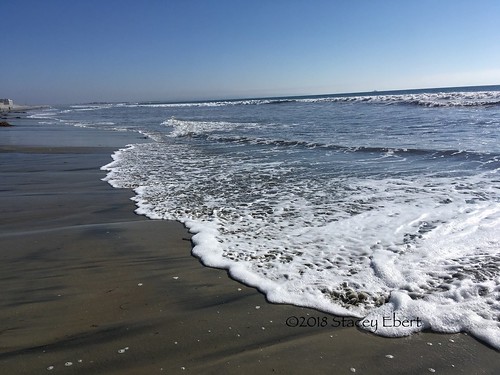
Ocean and limited humidity in Coronado, San Diego, California, USA
The words ‘there’s no bad weather, only bad clothing’ have never felt more real lately. With our shift from the west back to the east coast for a short while, those elements (and really good base layers) have been on my mind. How can we share the message of natural elements, their powers, and their setbacks with the most malleable minds among us? How do we showcase the magic and wonder those elements bring, while making sure to share the dangers and difficulties of managing life amongst them? If we’re not able to actually visit places that plop us in the center of the elemental zone, how can we convey their influence? Travel changes everything. Adding that travel mindset and opening our eyes to the cultures that reside in various elements not only provides more insight and information, but also enhances empathy, compassion, and understanding for the pros and cons of life lived differently.
The elements can be divided into a variety of characters. There are those of the deserts and oceans, those of the ice and snow, those of the typhoons and monsoons, and those that come along with the changes of weather, like the cold and the warm, the dry and the wet. Certainly putting ourselves in the center of those challenging elements teaches a first hand lesson. Interacting with those who live or spend an immense time within those elements also provides a first hand lesson. As we can’t all plunge ourselves into the deep end of the Artic or hang with the Emperor Penguins in the Antarctic, there are other ways to dive into those elements to increase our awareness, open lines of communication, and enhance our cultural understanding and appreciation.
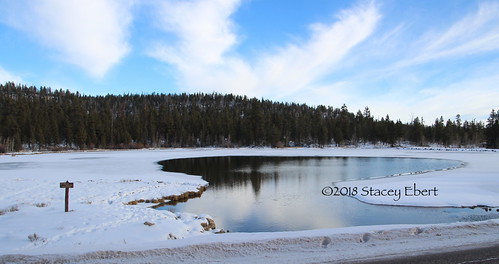
Ice and snow in Bryce Canyon, Utah, USA
How to cope with, live with, and thrive in the elements is an art form in itself. Sure, we know that life on an island might be warmer than that in Siberia, but do we fully open ourselves up to be engaged in the learning process of what life in those locations actually looks like? How do you get your food, what are the hazards and benefits of living there, what is found to be difficult, and what is found to be a luxury - asking a plethora of residents these, and many other pertinent questions, is necessary to fully understand day to day life and cultural existence. These questions are not as often asked while we’re lounging by the beach on a holiday in Cancun, diving the reefs in The Maldives, or ice climbing New Zealand’s Fox Glacier. It would be fantastic if we could all hop a ship to Antarctica and be informed by a National Geographic naturalist every step of our journey, but I’m not certain that’s a realistic request. How do we bring that level of learning to that which we know of the elements?
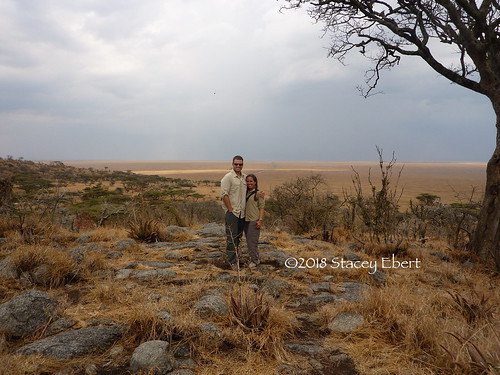
Dry savannah in Serengeti, Tanzania, Africa
6 ways to embrace the elements
1. Travel
Dreaming of glaciers, deserts, salt flats, the Indian coastline, or anyplace different to that which your daily life encounters? Travel is one of the best ways to experience the elements. Watching floating ice, managing the rains of a typhoon, trying to stay hydrated in the desert heat, or discovering how nature affects the growing reefs can be a game changer. Meeting with scientists who brave the Antarctic, Bedouins who live amongst the desert, or those who live in a remote spot that gets battered by the elements all year long who can share their wisdom and experience with travelers of all kinds enhances learning beyond measure.

The red sand of the Red Centre, Uluru, Australia
2. Read National Geographic and other magazines
Read, read, and re-read! Start kids young on magazines that share information about worlds different from their own. Let them fumble their way through maps and legends to discover that different isn’t bad, climate change is real, and that not all produce comes from a supermarket. Help them learn about the life of Africa’s Himba tribe who uses parts of the land to create their renowned skin color. Show them that there are those who triumph over the elements, those who struggle through them, and those who, if ill prepared, can be destroyed by them.
3. Visit museums
Even if travel is an option, visits to museums can help to enrich the already unfolding story. Science and technology related, educational, hands-on, artistic, or all things culture - regardless of the content, somewhere embedded in the art, the play, and the architecture, are the elements. Learn about climate change and its effects on our land, water, and air. Learn about the Inuits in Canada, the residents of northern Lapland, the Masai in Tanzania, the trekkers of Nepal, or the Australian Aborigines - all have lessons to share about how the elements impact their everyday interactions, their history, and their ancestry.
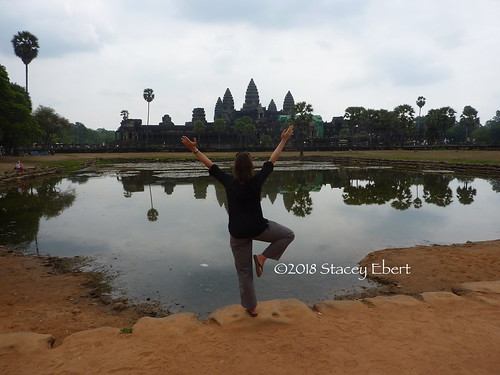
Heat and humidity in Angkor Wat, Cambodia
4. Find lectures
Listening to an expert (whether on a Skype session, in person, or an audio setting) brings photographs and text to life. Find a travel expo, book an event with the Royal Geographic Society, check out what your local library has to offer, check out any of the millions of podcasts, or head over to the closest university and audit a talk. People have experiences to share - and listening to those experiences broadens minds, enriches education, and shifts perspective. Even one of my favorite fourteen year olds knows that ethnocentrism exists in a vacuum. Listening to those scientists, geologists, geographers, and historians can burst open the borders and let the information fill our minds and souls.
5. Talk to people from varied lands
Wherever I am, my ears pick up on accents. Sometimes it’s a chat with locals when you’re in a foreign land - other times it's a random conversation with a traveler passing through wherever I happen to be located. Conversations matter. It may be as simple as asking someone what type of currency do you use, what’s your favorite movie, and what does it look like at your house or on your table when you celebrate a specific event or holiday. Talk to people, break bread with people, learn from them, listen to what they have to say. Shrink the boundaries between ‘us’ and ‘them’ - this is how the world learns, the world grows, and the world becomes a kinder, more open, and safe space.
6. Download apps
The world of technology puts a computer in the palm of our hands. With this access comes great possibility. Find what works for you and yours and download away. iNaturalist tells you the flora and fauna you’re looking at. A myriad of weather apps explain the daily weather, the climate, and often how the elements impact communities. Maps show you whether you’re near elevation, salt water, or snow-covered wintry peaks. Videos of climate change events and those of how the elements impact people’s lives flood the wires on a daily basis. Take advantage of that online tech and learn about where you live and how many of the world’s peoples are constantly affected by weather and the natural elements that add both sunshine and darkness, humidity and ice, and constant awe and disaster to our lives.
Pin for later:
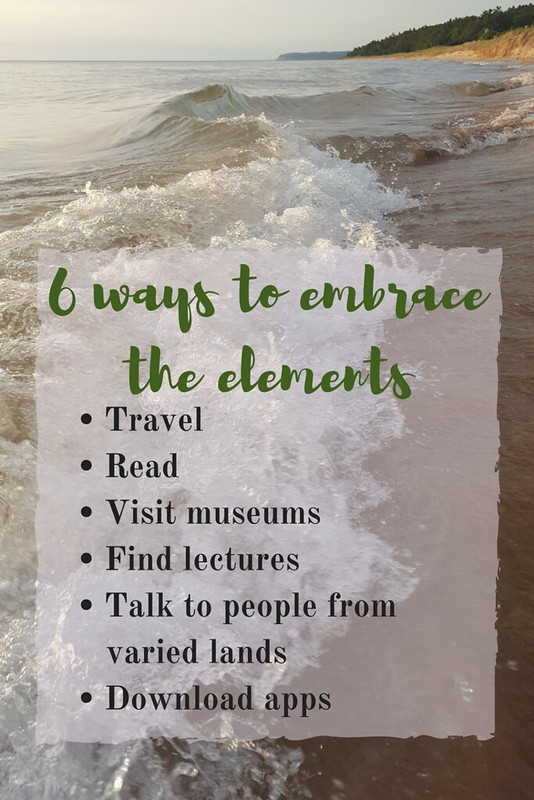
Stacey Ebert, our Educational Travels Editor, is a traveler at heart who met her Australian-born husband while on a trip in New Zealand. Stacey was an extracurricular advisor and taught history in a Long Island public high school for over fifteen years, enjoying both the formal and informal educational practices. After a one year 'round the world honeymoon, travel and its many gifts changed her perspective. She has since left the educational world to focus on writing and travel. She is energetic and enthusiastic about long term travel, finding what makes you happy and making the leap. In her spare time she is an event planner, yogi, dark chocolate lover, and spends as much time as possible with her toes in the sand.
Check out her website at thegiftoftravel.wordpress.com for more of her travel musings.
All photos courtesy and copyright Stacey Ebert, except word photo, courtesy and copyright Wandering Educators
